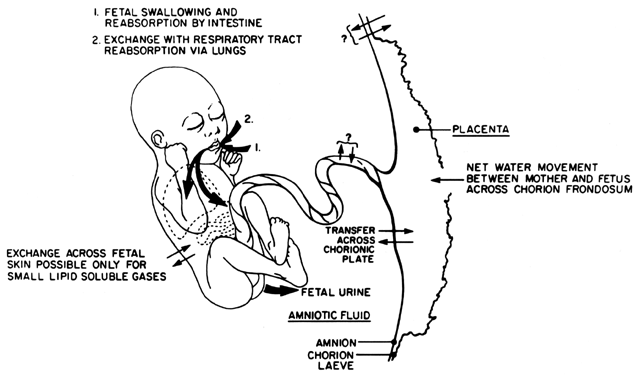

The team will help the baby breathe using a face mask attached to a bag that delivers an oxygen mixture to inflate the baby's lungs.If the baby is not breathing or has a low heart rate: This intervention is often all babies need to begin breathing on their own. If the baby is not active and crying right after delivery, the team will: If the baby is active and crying, no treatment is needed. This happens in more than 10% of normal pregnancies. 16, 17 The latest seventh edition NRP guidelines are just the latest set of recommendations advocating for less invasive interventions, leading to even fewer potential opportunities for neonatal intubation.A special care team should be present when the baby is born if traces of meconium are found in the amniotic fluid. 15 Other recent efforts to provide more noninvasive respiratory support for preterm infants have also led to subsequent decreases in neonatal intubation opportunities. 12– NRP recommendations, limiting intubations for vigorous infants born through MSAF, began a decline in delivery room intubation opportunities. This quandary is not new because opportunities for intubation, particularly in the delivery room, have been declining for some time. 11 Furthermore, because work-hour limits have reduced the time spent by pediatric trainees in inpatient settings, there are fewer opportunities for procedural experience, including neonatal intubation. In an era of value-based care, we are performing fewer procedures and interventions as we move toward safely doing less in many areas of medicine.


In this study, 10 an important additional question related to the potential decline of intubation experience in practitioners and trainees is also asked. They did not include potentially higher-risk late preterm infants in their cohort, nor did they limit their denominator to only those classified as nonvigorous at birth or to those admitted to the NICU. Their study stands apart in that they identified and included all deliveries attended for term infants born through MSAF at their institution. They did find a decrease in the need for respiratory support after the first day of life, improvement in 1-minute Apgar scores, and a decrease in the number of delivery room intubations. 10 They found no difference among the 2 groups in NICU admission rates, length of stay, and need for respiratory support on admission. In this study, the authors examined the clinical outcomes of term (≥37 weeks’ gestational age) infants born through MSAF at a single large academic center before and after adoption of the seventh edition NRP guidelines. In this issue of Hospital Pediatrics, Myers and Gupta 10 submit another entry into the literature to help us answer these questions. Nonetheless, the results of this study added to ongoing speculation regarding the latest changes in the NRP guidelines.

It is unclear if perhaps some of the nonvigorous infants in the preintervention period remained so because of attempts to withhold stimulation to perform intubation before the first cry. In this cohort study, the authors looked specifically at nonvigorous infants born through MSAF and noted that the proportion of these infants declined from 10% to 8% after adoption of the recent NRP guidelines. However, no difference in the incidence of meconium aspiration syndrome (MAS) was observed. A retrospective study conducted by Chiruvolu et al 7 revealed an increase in NICU admissions for respiratory causes and an increase in the need for mechanical ventilation, oxygen therapy, and use of surfactant after implementation of the new guidelines. Aldhafeeri et al 6 conducted a retrospective single-center study, comparing outcomes before and after implementation of the most recent NRP guidelines, and found no significant difference in meconium aspiration related complications between the 2 groups. However, do we do more harm by intubating or by not intubating these infants? In recent studies, others have attempted to shed light on this question.


 0 kommentar(er)
0 kommentar(er)
